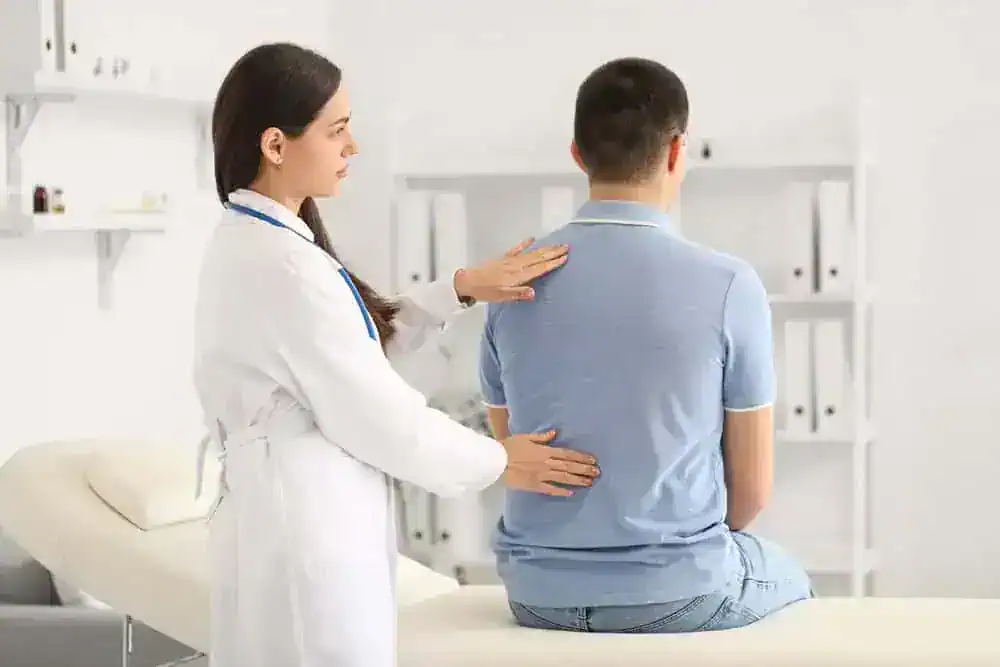Summary:
Measurable Benefits of Targeted Physical Therapy
Physical therapy produces quantifiable improvements in strength, mobility, and pain levels that translate directly into enhanced quality of life and reduced healthcare costs. Patients with back pain who complete structured physical therapy programs experience 50-70% reduction in pain intensity and 60-80% improvement in functional capacity within 8-12 weeks of consistent treatment. Your muscle strength, which decreases by 20-30% within just 2-3 weeks of pain-related inactivity, can be restored and often exceeded through progressive loading protocols that challenge tissues at precisely the right intensity to promote healing without re-injury. Range of motion limitations that develop from protective guarding and scar tissue formation improve by 40-60% through specific manual therapy techniques, including joint mobilization, soft tissue release, and neuromuscular re-education. At NY Spine Medicine, physical therapists use objective measurements, including dynamometry for strength testing, goniometry for range of motion assessment, and functional movement screens to track your progress and adjust treatment intensity based on measurable improvements rather than subjective reports alone. This data-driven approach identifies exactly which interventions produce the best results for your specific condition and ensures that your treatment plan evolves to maximize recovery potential while preventing plateaus or setbacks.
Sports Injury Recovery Protocols
Sports injury rehabilitation at NY Spine Medicine follows evidence-based protocols that reduce re-injury rates by 65-75% compared to athletes who return to activity without proper rehabilitation. Phase-based progression starts with protecting healing tissues through controlled movement and gentle range of motion exercises, then advances through strength building, sport-specific movement patterns, and finally return-to-play testing that confirms your readiness for full activity. Manual therapy techniques including instrument-assisted soft tissue mobilization (IASTM) and dry needling accelerate tissue healing by improving blood flow and breaking up scar tissue that limits mobility and strength.
Chronic Pain Management Through Movement
Sports injury rehabilitation at NY Spine Medicine follows evidence-based protocols that reduce re-injury rates by 65-75% compared to athletes who return to activity without proper rehabilitation. Phase-based progression starts with protecting healing tissues through controlled movement and gentle range of motion exercises, then advances through strength building, sport-specific movement patterns, and finally return-to-play testing that confirms your readiness for full activity. Manual therapy techniques including instrument-assisted soft tissue mobilization (IASTM) and dry needling accelerate tissue healing by improving blood flow and breaking up scar tissue that limits mobility and strength.
Want live answers?
Connect with a NY Spine Medicine expert for fast, friendly support.
Post-Surgical Rehabilitation Success Metrics
Post-surgical rehabilitation at NY Spine Medicine follows specific timelines and milestones that optimize healing while preventing complications like adhesions, muscle atrophy, and joint stiffness that can occur without proper intervention. Your rehabilitation begins within 24-48 hours post-surgery with gentle movement and positioning techniques that promote circulation and prevent blood clots, then progresses through carefully calibrated phases that respect tissue healing timeframes while maximizing functional recovery. Orthopedic physical therapy protocols address the specific biomechanical requirements of your surgical procedure, whether spinal fusion requiring core stabilization exercises, joint replacement demanding range of motion restoration, or soft tissue repair needing graduated loading progressions. Patients who complete structured post-surgical rehabilitation achieve 85-95% of their pre-injury function levels, compared to 60-70% recovery rates in those who rely on natural healing alone. Your physical therapist monitors surgical precautions while progressively challenging your healing tissues, using therapeutic ultrasound, electrical stimulation, and manual techniques to reduce scar tissue formation and promote optimal tissue quality. Return-to-activity testing confirms that your strength, range of motion, and movement quality meet specific criteria before advancing to higher-level activities, preventing setbacks that can occur when patients progress too quickly based on how they feel rather than objective measures.
Neurological Rehabilitation Approaches
Neurological physical therapy at NY Spine Medicine targets the nervous system’s remarkable ability to reorganize and form new connections through neuroplasticity-based interventions. Balance training using unstable surfaces, visual challenges, and dual-task activities improves postural control by 40-60% and reduces fall risk by up to 50% in patients with neurological conditions. Motor relearning techniques including task-specific training and repetitive practice help restore movement patterns that neurological conditions have disrupted, leading to measurable improvements in coordination and functional independence.
Sustaining Long-Term Functional Gains
Long-term success requires transitioning from supervised physical therapy to independent maintenance programs that preserve and build upon your treatment gains. NY Spine Medicine provides detailed home exercise programs with progression guidelines that allow you to continue improving after formal therapy ends. Regular reassessments every 3-6 months identify areas needing attention before small problems become major limitations, maintaining the 70-80% improvement levels achieved through initial treatment.
Investing in Long-Term Pain Freedom
Physical therapy and rehabilitation represent your most cost-effective path to lasting pain relief and functional restoration, with treatment costs of $2,000-$4,000 potentially saving you $20,000-$40,000 in future medical expenses and lost productivity. Your commitment to evidence-based rehabilitation protocols produces measurable improvements that compound over time, creating a foundation of strength, mobility, and movement quality that protects against future injuries and degenerative changes. NY Spine Medicine’s data-driven approach tracks your progress through objective measures, assuring that your time and effort produce maximum results. Contact NY Spine Medicine today to begin a rehabilitation program that transforms your pain experience from chronic limitation to lasting functional freedom.






